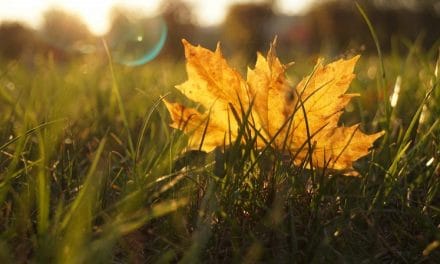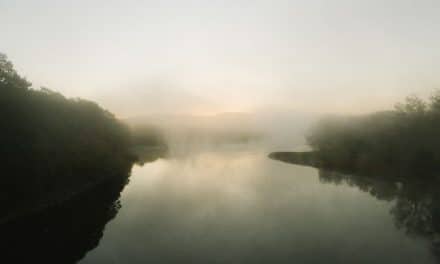
Photo by: Erico Marcelino
When we picture landscape photography, most of us think of wide-open scenic vistas with nothing but vastness surrounding us. Mountaintops, coastal scenes, and vast emptiness found in fields that roll on, seemingly forever.
However, there are other locations where you can capture amazing landscapes as well. One such often-forgotten location is the forest. A simple wander in the woods with your camera can leave you with some truly rewarding results. As an added bonus, the forest is often a quiet place that gives you room to pause, think, and reflect, giving you time to compose your image –and space to create more contemplative, deeper images.
If you’d like to start incorporating trees into your images or for trees to feature as a main point of interest in your images, here’s a look at some tips that’ll help to get you started.
Tips for Capturing Trees
You don’t have to wander into a forest to photograph trees. A lone tree, a row of trees, a cluster of trees, or even a dead tree can add interesting detail to your image if used correctly. Here are a few ideas for incorporating trees into your images.
• Look for the Light
Regardless of the type of lighting, or weather conditions, you can still get some excellent shots. Deep in the forest on a bright sunny day, you can get some amazing light as the sun shines through the trees. Or, look to capture trees on a day that’s cloudy or foggy. Keep in mind that the lighting will impact the feel of your resulting images –a foggy day can lend a sense of mystery to your images while a sun-dappled forest floor can make for a fresh, beautiful, warm summertime shot.

Photo by: Jeremy Bishop
• Adjust Your Angle
Like any other landscape photograph, the angle you choose will play an important role in your composition as well. While many photographers enjoy getting a bird’s eye view from above the trees, looking up from the forest floor can provide a stunning view as well. This is especially true in the thick woods where photographing the canopy above can offer an interesting perspective. Likewise, you can get low to include above-ground roots in your tree images, or get closer to create a close-up of the tree’s bark or the patters on the leaves. If you’re not happy with your image, often just a simple change to your angle can result in a completely different image, so don’t be afraid to try different perspectives until you find something you’re happy with.
• Consider Your Depth of Field
In most cases, you’ll want to shoot with a narrow aperture, for a wide depth of field –to ensure that most of your image is clear and in-focus. On the other hand, though, if you’re hoping to showcase one tree, or would like part of your image to be softly blurred or out of focus, look to use a wide aperture, or narrow depth of field, to blur out the surrounding details while throwing the subject into focus.

Photo by: Matthew Smith
• Consider Adding Contrast
Contrast is the name of the game when it comes to powerful photography, and when it comes to capturing tree images, this is certainly the case. A decent amount of contrast in an image can help to generate interest and grab attention. Contrast can take the form of complementary colors, like a blue sky or the blue sea in the background against green trees –or even in concept –like a new sapling growing out of the old-growth of a fallen log. Look for contrasting shapes and forms too –like the soft, billowy mist and the sharp, jagged forms of trees rising above them, or delicate, new leaves poking out of sturdy, rough branches.
• A Solitary Tree
The classic image of a lone tree on the horizon is popular for a reason: it works! Single trees can also be just as powerful as a group of trees, if not more so. A single tree can be used for a focal point or a supporting element –depending on the point you are trying to convey. A dead tree against a sparse background or piece of driftwood on the beach can also be used to create a powerful composition.

Photo by: Dawid Labno
• Create Silhouettes
Trees can also be great subjects for silhouette images. Using backlighting, you can create a tree silhouette that emphasizes the details of the tree. Tree silhouettes can be made more interesting by taking advantage of an especially colorful sky or background, so look to capture them at evening or in the early morning hours.
Photographing Trees During Different Seasons

Photo by: pine watt
While many landscapes have their peak seasons, there are great opportunities to photograph trees year-round.
• Spring – Springtime is an especially appealing time since many trees are starting to bud. The soft colors that appear in spring are especially beautiful, and the delicate lighting that’s found this time of year –along with the beautiful flowers that often grow at the edge of the forest makes this a great time for creating beautiful images featuring trees or woodland scenes.
• Summer – Summertime is another great time of year for capturing tree images. Heading into the deeper woods on a bright summer’s day will often present a great opportunity for capturing the light-dappled forest floor.
• Autumn – In some areas, autumn is arguably the most favorable time to photograph trees or forests. While the changing colors of the leaves don’t last long, this short window of opportunity can present an amazing opportunity for some breathtaking images. Even after the leaves have fallen, the colorful foliage on the ground can provide you with some amazing colors that can play a big part in your composition. s
• Winter – Finally, the winter months aren’t without their own sense of beauty –especially when it comes to trees. The bare branches can provide you with strong elements that can feature as main focal points in your images while fog, mist, and rain also give you some interesting weather elements to work with to help you create some moody and dramatic shots.
→ Related reading:
- 10 Tips for Beautiful Spring Photos
- Tips for Taking Beautiful Summertime Landscape Photos
- 15 Ideas for Your Autumn Photography
- Winter Landscape Photography Tips
- 10 Ideas for Winter Landscape Photos
Trees are one element that really is unlike any other. They’re versatile enough to serve as a main point of interest while they can also work as supporting details, helping to enhance the scene at hand. No matter how you incorporate them, there’s no question that they can help to add a breath of fresh air into your shots. Look to incorporate them into your images, and enjoy finding new ways to capture these exciting elements in your photography.
Have you tried photographing trees or incorporating them into your landscape images? Share your tips with us!
Photo license links: Unsplash










